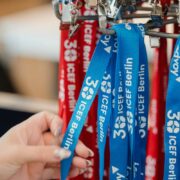Foreign enrolment in German higher education edged upward in 2020/21
- The total number of international students in German universities grew slightly in 2020/21
- Total numbers were buoyed by increasing enrolments in upper-year courses and remote studies
- However, the number of commencing students fell by nearly 20% year-over-year
Earlier optimistic forecasts for foreign student numbers in Germany this year have been borne out in the latest Wissenschaft Weltoffen 2021 report from the German Academic Exchange Service (DAAD) and the German Centre for Higher Education Research and Science Studies (DZHW).
Using the 2020/21 winter semester as a benchmark, DAAD reports total enrolment of just under 325,000 at that point. This represents a roughly 1.5% increase year-over-year and total growth of nearly 7.5% from (pre-pandemic) enrolment in 2018/19 through 2020/21. Even with that overall growth, however, the number of students commencements fell by about -20% year-over-year.
Just over seven in ten foreign students in Germany are enrolled in universities, with the remaining 29% studying at a university for applied sciences.

There are a number of factors behind those contrasting trends in total enrolment and commencements, including the impact of COVID-related deferrals over 2020 and 2021, the decline in visa approvals for short-term studies (and a corresponding increase in the number of students pursuing degrees in Germany), and the rising numbers of students studying remotely via online programmes offered by German institutions.
DAAD adds that German higher education institutions have considerably expanded their online study offerings and that the number of first-year international students taking up remote studies from outside of Germany has increased from 14% in 2019 to 24% this year.
Commenting on the latest trends, DAAD President Professor Dr Joybrato Mukherjee said that, "The current figures show that international students continued to trust Germany as a study location, also during the COVID-19 pandemic. In addition to our member institutions’ great commitment, this was due to the fact that higher education institutions have made significant progress with regard to digitisation in the past year. This puts them in an excellent position to compete for the most talented minds around the world, once the coronavirus pandemic is over."
Even so, the decline in commencements will be a concern for German educators, with the overall foreign student population now more heavily weighted in upper-year courses. Without a more dramatic increase in commencements for the upcoming intakes, that current imbalance could create more downward pressure on overall enrolment in the next couple of years as larger numbers of students complete their studies.
Where do students come from?
As the following chart illustrates, Asia remains the largest source region for German higher education and, along with North Africa and the Middle East, the main driver of overall enrolment growth in Germany.
DAAD reports that the leading sending countries for Germany in 2020 were China (about 41,000 students), followed by India (25,000), Syria (15,000), Austria (12,000), and Russia (10,500). Overall, the number of international students in Germany has grown by more than 80% since 2010.

For additional background, please see:
















